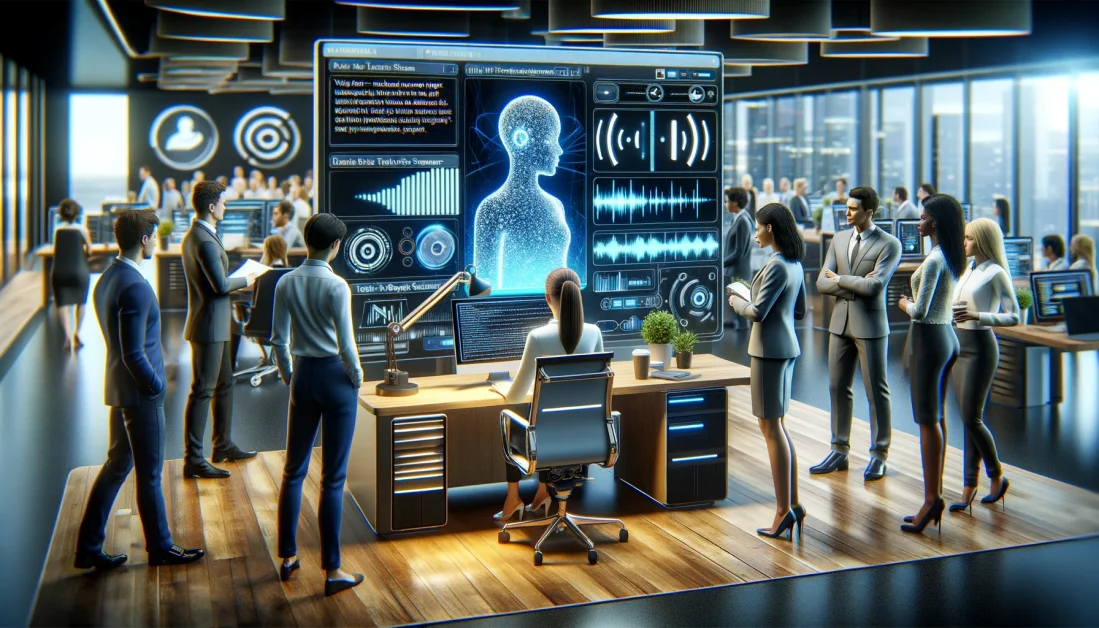In recent years, artificial intelligence (AI) has made significant strides in various domains, and one of the most exciting developments is in the realm of content creation. Text to video AI technology is at the forefront of this revolution, offering new ways to generate visual content from written text. This advancement is poised to transform industries ranging from marketing and education to entertainment and social media.
The Evolution of Text to Video AI
Text to video AI technology builds upon earlier AI developments, such as natural language processing (NLP) and computer vision. The journey began with simple text-to-speech applications, but recent advancements have led to sophisticated systems capable of generating videos that closely match the input text. This technology leverages deep learning algorithms and large datasets to understand and translate textual descriptions into visual narratives.
How Text to Video AI Works
The process of converting text to video involves several steps:
- Text Analysis: The AI system first analyzes the input text to understand its content, context, and emotions. This involves parsing the text for keywords, phrases, and sentiments.
- Scene Generation: Based on the text analysis, the AI generates a storyboard or a sequence of scenes. It determines the visual elements needed, such as characters, backgrounds, and actions.
- Visual Synthesis: The AI then synthesizes the visual elements, creating animations or selecting appropriate video clips from a database. This step often involves integrating computer-generated imagery (CGI) with real-world video footage.
- Synchronization: Finally, the AI synchronizes the visuals with the text, ensuring that the resulting video aligns with the narrative flow and tone of the original text.
Benefits and Challenges
Benefits
- Efficiency: The text to video AI significantly reduces the time and effort required to produce video content. This will be done in a matter of hours.
- Cost-Effectiveness: By automating parts of the video production process, this technology lowers production costs, making high-quality video content accessible to smaller businesses and individual creators.
- Scalability: AI-powered video generation allows for the creation of large volumes of content, enabling businesses to scale their marketing and communication efforts effectively.
Challenges
- Quality Control: Ensuring that the generated videos meet quality standards and accurately reflect the intended message can be challenging. Human oversight is still necessary to refine and polish the final product.
- Creativity Limitations: While AI can generate videos based on text, it may lack the creative nuances and originality that human creators bring to the table.
- Ethical Considerations: The use of AI in content creation raises ethical questions, such as the potential for misuse in generating deep fakes or spreading misinformation. Establishing guidelines and regulations is essential to address these concerns.
The Emergence of Vidnoz
Vidnoz emerged as a game-changer in the video production industry by addressing common challenges faced by creators, such as time constraints, high production costs, and the need for creative flexibility. Unlike traditional video production methods, which often require extensive resources and expertise, Vidnoz simplifies the process by automating various aspects of video creation.
Impact on Video Production
1. Cost Reduction
The cost of video production has traditionally been a barrier for many businesses and individual creators. Vidnoz reduces production costs by minimizing the need for expensive equipment, professional services, and extensive editing. This democratization of video production enables a wider range of users to create high-quality content without significant financial investment.
2. Enhanced Creativity
With Vidnoz, users have access to a vast array of creative options and customization tools. This allows for greater experimentation and innovation in video production. Creators can explore different styles, formats, and visual elements, pushing the boundaries of traditional video content.
3. Accessibility and User-Friendliness
Vidnoz is designed with user-friendliness in mind, making advanced video production accessible to individuals with limited technical skills. The intuitive interface and guided workflows ensure that users can create professional videos with ease, regardless of their experience level.
Conclusion
Vidnoz technology represents a significant evolution in video production, combining AI-driven automation with creative flexibility. By addressing traditional challenges and introducing innovative features, Vidnoz has transformed the way videos are created, making high-quality content more accessible and efficient. As the technology continues to evolve, it promises to shape the future of digital media, offering exciting possibilities for content creators and businesses alike.
Keep an eye for more latest news & updates on Possiblyethereal!
